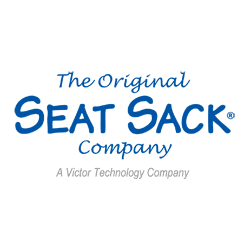It is autumn again, and classrooms are filled with students’ and teachers’ excitement, energy, and spirit for the new school year.
Put yourself into the classroom space. What would you hear? Students talking and shuffling papers, chairs screeching across the floor, a lawn mower outside, perhaps the hum of an air conditioner. And, of course, the teacher, her voice bellowing over it all.
Then there is the room, contributing to the acoustic cacophony: reverberant, echoey flat surfaces like windows, walls, and floors.
It is functional from a physical space perspective, yet it lacks acoustic design sense, a deterrent to communication, the very thing we are trying to accomplish in the classroom.
What Defines a Classroom?
A classroom is not defined by four walls and desks. It is determined by its ability to facilitate communication and learning. I like to call it a sacred learning space. It is only as good as its ability to promote productive and efficient learning.
At the heart of achieving this aim is good communication. From teaching subject matter to assigning homework, a student’s comprehension of the teacher should be the highest concern. However, students miss up to 25 to 30 percent of words in a typical classroom due to distance, noise, and poor acoustics.
Research on Student Outcomes
Fortunately, after decades of research, it is clear that soundfield systems improve student outcomes.
An American Speech Language Hearing Association study found that students in amplified classrooms scored significantly higher on reading and language assessments than in unamplified rooms. Speech recognition, perception, and listening were improved by as much as 30 percent in noisy environments.
Another study on the impact of sound-field amplification found that at-risk groups – such as English language learners, students with temporary hearing loss (ear infections), and those with special education needs – benefited most.
Teacher Health and Classroom Management
Students are not the only ones who benefit. Teachers report fewer disruptions and less repetition and see improvements in on-task student behavior and classroom participation.
Furthermore, in a study by the Journal of Speech, Language, and Hearing Research, 65 percent of teachers reported voice problems during their career, a leading cause of health-related teacher absenteeism.
Amplification systems reduce vocal strain and fatigue, with research reporting improvements in teacher well-being. Educators often describe these systems as instructional tools they not only use but depend on.
What Is a Soundfield System?
To mitigate this inherent communication problem in classrooms, a small sector of the audio solutions market created what is known as the soundfield, or classroom audio, system. This typically consists of a speaker or set of speakers (wall, ceiling, or desktop), an amplifier (integrated or external), and a wireless microphone worn by the teacher.
The most common microphone is a pendant worn like a necklace, though headsets and lapel microphones are also used. These systems are designed not to make the teacher’s voice louder but clearer and better distributed—with high vocal fidelity so that every student, no matter where they are seated, has an equal opportunity to hear and comprehend.
Industry Trends and Misconceptions
There are a handful of dedicated soundfield companies in the education market. Some solutions by these manufacturers integrate fully with intercoms, network controls, or security systems, while others remain simple and cost-effective, focusing purely on soundfield. The cost between systems can be substantial, depending on the integration features and installation costs.
Numerous consumer-oriented audio solutions are also available. For instance, a common misconception arises with whiteboard “soundbars.” Because of the rapid adoption of whiteboards and interactive flat panels, soundbars are often installed as a quick audio solution. Soundbars are not designed for speech clarity. Their placement and bass-heavy frequency response muddy the higher vocal ranges critical for comprehension. In short, there is no such thing as a “soundbar soundfield system.”
Purchasing Considerations
A school should consider several factors when addressing communication in the room and purchasing a soundfield system.
- Room Acoustics – Simple additions like drapes, acoustic panels, and carpets can reduce reverberation.
- System Design – Avoid mass-market audio solutions like soundbars and desktop speakers when clear communication is the goal. Soundfield systems are designed for high speech fidelity.
- Budget – Effective systems do not need to be overly complex or expensive. For a pure soundfield system designed for high vocal clarity, schools can budget around $1,000 or less per classroom.
Conclusion: No Student Left Out
We know audio is not the first thing school technology staff consider in their budgets. However, we encourage all schools to do the research themselves. Even piloting a system in one room can reveal the difference between an amplified room and an unamplified room over the school year.
Every child deserves to hear their teacher clearly in a classroom. Some obstacles can be mitigated, like the room’s acoustic properties, but others are unavoidable. They include the shuffling of feet and paper, the buzzing lights, the hallway noise, and the distance between student and teacher. Classroom audio is more than technology; it is a communication tool to ensure that no student is left out of the learning experience.
RJ Goetz is the director of sales & marketing for Cetacea Sound, an audio solutions provider to the K-12 and Higher-Ed education market. They focus on “small room” audio, typically classroom and training spaces of 1,200 square feet or less, www.cetaceasound.com.













